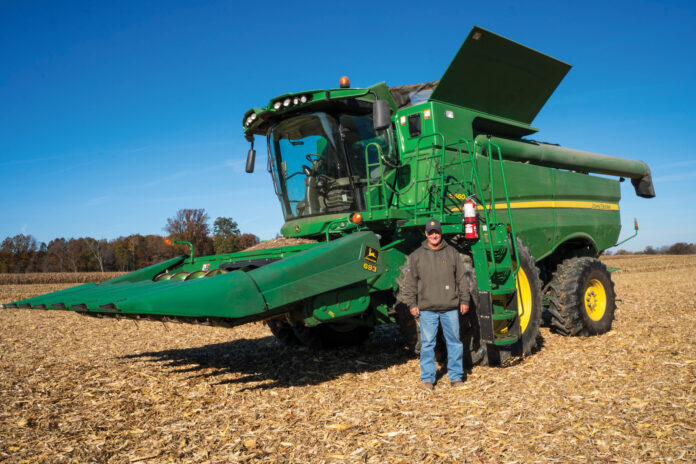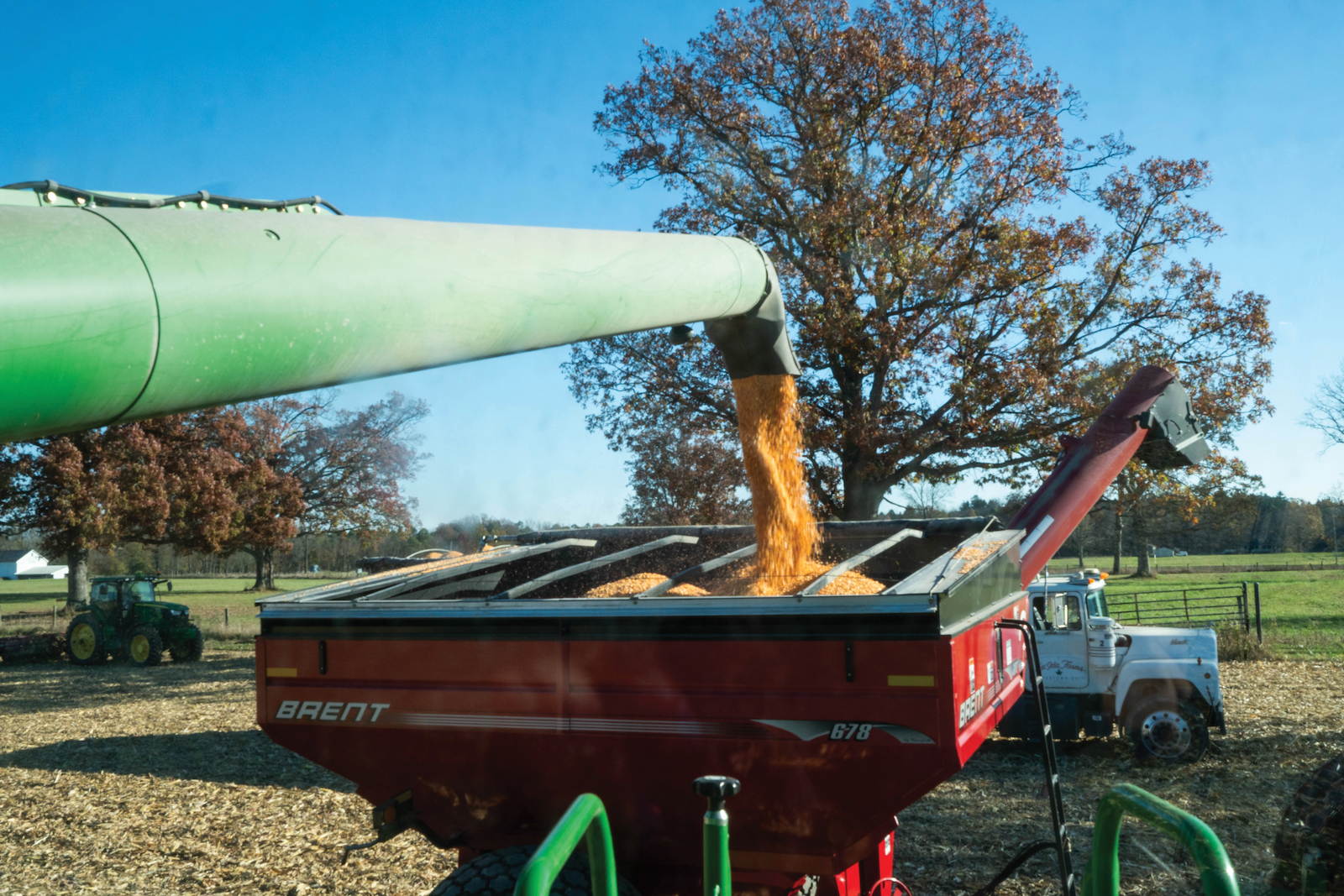
MINERAL RIDGE, Ohio — Lamar Liming combs through corn fields with his combine, going from one end to the other until the field is left with only stalk and cob scrapes. He empties the kernels in a big truck that will eventually travel two counties over to Colombiana where it will be used for livestock and ethanol production purposes.
Like many farmers, however, Liming knows this harvest season is coming at an unusually late time of the year. In fact, as of Oct. 30, the U.S. Department of Agriculture’s Crop Progress report found only 29% of corn had been harvested in Ohio, compared to a five-year average of 49% in years past. According to the USDA’s latest Crop Progress report, 68% of Ohio corn was harvested on Nov. 12, while 85% was harvested at this time last year.
At the same time, the USDA’s latest data predicts that Ohio will see a record corn yield of 195 bushels per acre; ten years ago, Ohio’s corn yield was 174 bushels per acre.
What appears as a juxtaposition, these two situations pose questions: how could these two situations occur simultaneously, what caused a late harvest and what does this mean for the future?
Farmers and experts in agriculture alike have some guesses and answers to this puzzling predicament.
Wildfire haze
Liming is a sixth-generation farmer, all 225 acres of his farm dating back as early as 1856. Liming is an Ohio State University alumni and has been farming his whole life. He grows corn, soybeans, wheat and hay.
He has served on the Heritage Cooperative board of members for 20 years and has represented District 3 of the Ohio Corn and Wheat Growers Association for eight years.
This year, Liming planted his corn on time in the spring and had ideal growing conditions. He also had consistent rainfall all year, except for a dry period in early July.
Liming has seen late harvests before, but usually, they are a result of late planting in the spring. He attributes the year’s late harvest to restricted sunlight caused by the Canadian wildfire haze in late May and early June.
“In this part of the country, we don’t get much sun,” Liming said. “We got more cloud cover off Lake Erie, and then combined that with the smokey, hazy cover we had, we just didn’t get the (right) sunlight, that slowed the progress.”
Liming says his hay also took longer to dry out than usual this year.

Possible impacts
Other farmers throughout the state have also noticed connections between the wildfires and corn growth. Stacie Anderson farms in Wood County, Ohio with her husband, Brian and, like many farmers in the state, is experiencing a late harvest. She told WTOL11 that the haze affected the sunshine and heat her corn needed to reach maturity by late October.
Ohio State University Extension discussed the potential impacts the wildfire haze could have on crops in a newsletter in July. These possible impacts included the reduction of photosynthesis in crops from less light availability and the occurrence of wildfire residue left on leaves; as well as the formation of gases like ozone near crops which can induce plant stress, reducing growth and development.
Corn is most susceptible to growth changes when it comes to light availability compared to other crops like soybeans. However, a later study by Ohio State University showed that the haze may not have been as detrimental as expected.
Alex Lindsey, an associate professor of Crop Ecophysiology and Agronomy at OSU, and colleagues tracked daily light integral and light duration at three different locations across Ohio to see how corn was affected this year. While they did see a drop in light interceptivity when the haze occurred, they concluded it most likely did not affect the corn long-term.
The haze didn’t happen during crucial corn development periods, like pollination and grain fill. Lindsey said even if it did, the corn would still receive some light, just not direct sunlight.
“We actually had above-average light interception (in May),” Lindsey said. “We did see a little bit of a tail off during the haze periods, but after early July we saw that line fit pretty close to the 10-year average.”
Late harvest
Lindsey says the late harvest was most likely a result of cooler overall average temperatures seen across Ohio — which slowed the accumulation of growing degree days. A second factor could be drought-like conditions early on in the growing season.
“A lot of our growers got planted in a timely manner, but in the month of May and into early June, we ended up having almost drought-like conditions and very little precipitation developed,” Lindsey said. “The corn emerged, but it didn’t really progress physiologically because there wasn’t a lot of water for the takeoff.”
Lindsey and Liming both note the later corn harvest is, the more susceptible corn is to damage from a number of factors.
“The longer corn stays in the field, you get winds that blow it down, you get lodging,” Liming said. “The later it is in the field, the more wildlife damage you get.”
Adjustments
In order to avoid a late harvest, as a result of the conditions seen this year, Lindsey recommends farmers shift some of their management decisions.
He suggests staggering planting dates and altering maturity selections by using younger corn hybrids on the market that still produce a good yield equivalent to full-season hybrids.
“That (way) it isn’t like all of your corn is waiting to dry down. There may be some you can run a little bit earlier,” Lindsey said.
(Reporter Liz Partsch can be reached at epartsch@farmanddairy.com or 330-337-3419.)












Late harvest, drought-like conditions, cooler temperatures, and possible reduced sunlight with higher ozone, yet record BPA. Seems like the scale is tipping both ways – simultaneously.